Radio Frequency Systems 48810 48810A & 48810B REPEATERS User Manual Manual
Radio Frequency Systems Inc 48810A & 48810B REPEATERS Manual
Manual
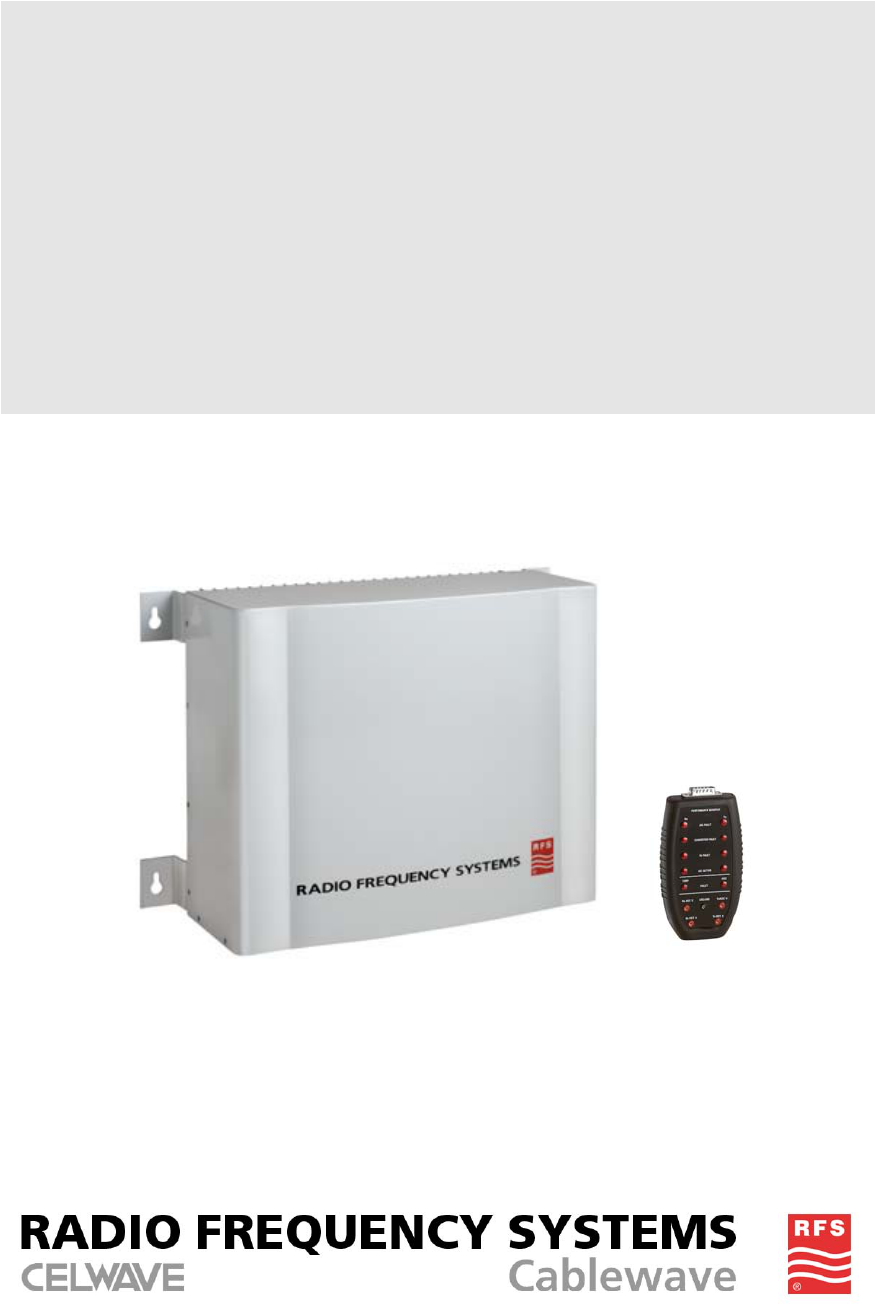
48810A & 48810B
User's Manual
200 Pondview Drive, Meriden, CT 06450 • (877) 737-9675 • Fax (203) 821-3852
www.rfsworld.com
Disclaimer
All information and statements contained herein are accurate to the best of the knowledge of Radio
Frequency Systems, but Radio Frequency Systems does not make any warranty with respect
thereto, including without limitation any results, which may be obtained from the products described
herein or the infringement by such products of any proprietary rights of any persons. Use or
application of such information or statements is at the user’s sole risk, without any liability on the
part of Radio Frequency Systems. Nothing herein shall be construed as license of or
recommendation for use, which infringes upon any proprietary rights of any person. Product
material and specifications are subject to change without notice. All sales of the products described
herein are subject to Radio Frequency System's standard terms of sale and the specific terms of
any particular sale.
Table of Contents
General Statements 1
Maximum Permissible Exposure Limits 2
Product Overview 3
Field Tune-up, Alignment or Calibration 3
FCC ID and Canada Certification Numbers 3
Theory of Operation 3
Electrical Specifications 4
Mechanical Specifications 4
Environmental Specifications 4
Intermodulation, Power, and AGC 4
AGC Automatic Shutdown 5
Manual Gain Adjustment 5
AC/DC Power 6
Grounding and Surge Protection 6
Antenna Isolation 6
Installation 7
Diagnostics/Troubleshooting 8
Test Points 9
Component Location 11
Maintenance, Repair and Warranty 12
Periodic Maintenance 12
Ordering and Returning Components 12
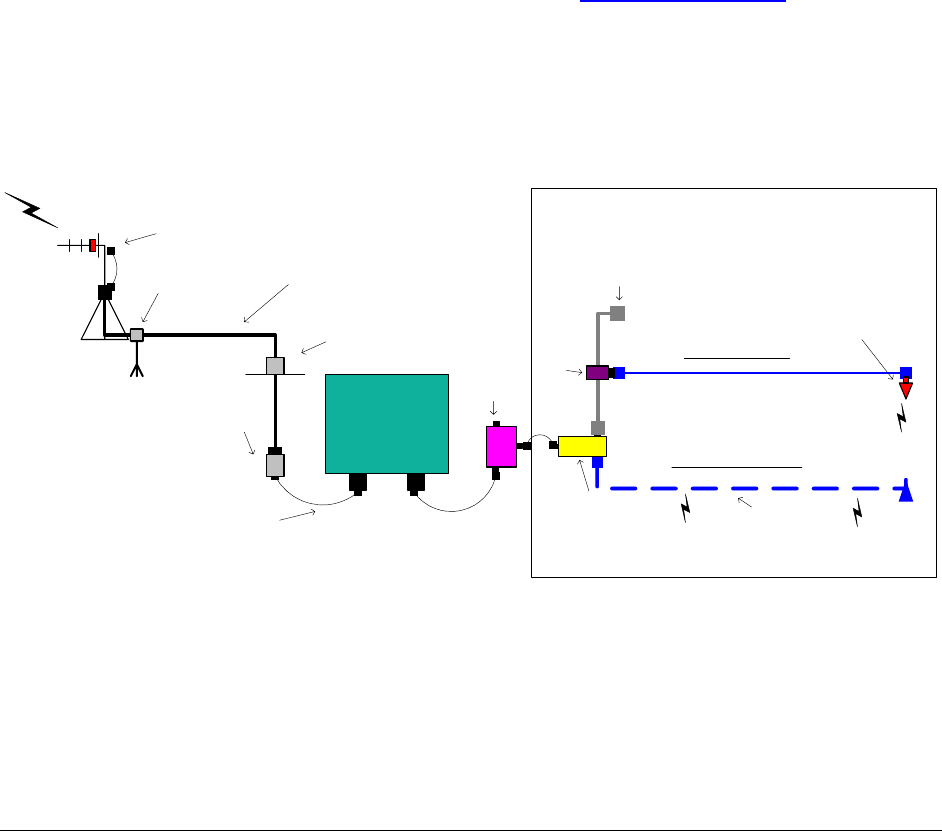
General Statements
Thank you for selecting this RFS product. We are confident that you will find this product in proper
working order, meeting all stated specifications. If not, please contact customer service immediately
at 1-800-321-4700 and we will resolve the issue without hesitation.
Please read this manual. A full understanding of product operation will support optimal performance
and prevent accidental damage not covered by the stated warranty.
Do not operate this product without proper loads on both antenna ports. You must connect
both antenna ports to an antenna or a 50-Ohm load, rated for at least 1 watt.
These products receive and amplify RF signals in the 1900 MHz PCS band. As such, these
products are intended for use by the licensee of the respective service and should not be
used without the expressed permission of the licensee.
The 48810 PCS Band Repeater can be used to cover indoor or outdoor areas. It is designed and
optimized for low cost, high reliability, and ease of use. This manual provides information on the
proper operation and care of the repeater, however, Radio Frequency Systems can provide the
total package of components and hardware for any type of repeater installation. See our catalog
for the full line of antennas, coaxial cables, and accessories at www.rfsamericas.com. For
assistance with this repeater installation and/or design of the distribution network to get the best
coverage possible contact RFS Applications Engineering at 1-800-659-1880
48810
Ground Kit
Wall/
Roof
Feedthru
1/2" or 7/8"
Coaxial cable
Distribution Network
Surge
Arrestor
Jumpers
Base Service Radiaflex 1/2" Plenum
Riser Rated Coax
1/2 or 7/8"
Cable
Taps 1/2" Plenum Coax
Donor
Antenna
Hangers and
Standoffs
In-building
Antennas
In-band or
Cross-band
Combiners
2, 3, or 4 Way
Splitters
1

Maximum Permissible Exposure Limits
THIS PRODUCT IS CATEGORICALLY EXCLUDED FROM ROUTINE ENVIRONMENTAL
EVALUATION ACCORDING TO CFR 47, SECTION 1.1037 AND 2.1091.
Repeaters like the 48810 generate radio signals and thereby give rise to electromagnetic fields. The
installer is expected to have a complete understanding of CFR Title 47, Sections 1.1307, 1.1310 and
2.1091. A brief discussion follows but is not intended to be a substitute. Additional information can
also be obtained from OET Bulletin 65.
Antenna installation should be performed by qualified technicians only.
Installation instructions are not optional and are for the purpose of satisfying FCC RF
Exposure Compliance.
All antennas (donor and service) are to be fixed-mounted and physically secured to one
location.
Maximum donor antenna gain is 28 dB.
Maximum service area antenna gain is 10 dB.
There are two types of antennas attached to this unit. Installation considerations for both of these will
be discussed separately.
Donor antennas receive the base site TX signals and transmit the mobile TX signals back to the base
site (uplink paths). These are typically mounted on rooftops or tower structures in occupational /
controlled esposure areas. The maximum composite power of the uplink path is +15 dBm (32 mW).
Section 1.307(b)(1) excludes from routine environmental evaluation, facilities, operations and
transmitters that, according to Table 1 (titled "Cellular Radiotelephone Service"), are less than 1000W
ERP for building mounted antennas and less than 1000W and greater than 10 meters above ground
for non building-mounted antennas. As such, with maximum power from the uplink path @ +15 dBm
(32 mW) and a maximum antenna gain of 28 dB, the donor antenna installation will not exceed 20
Watts (+43 dBm) and is categorically excluded.
However, according to Section 1.1307 (b)(1), the appropriate exposure limits of 1.1310 are applicable
to all facilities, operations, and transmitters. Therefore, the MPE (Maximum Permissible Exposure) of
Section 1.1310 applies to the donor antenna installation. OET Bulletin 65 provides methods of
calculating power density based upon the ERP and distance. It would be impossible to cover every
possible configuration in this manual. Likewise, it would be unreasonable to dictate the exact
parameters of every installation; therefore, it is the responsibility of the qualified technician to know
and ensure that Sections 1.1307 and 1.1310 of CFR Title 47 are being met.
Service antennas are also fixed mounted and covered by the same MPE considerations as the donor
antenna. However, a more stringent method would be to consider these antennas in the worse case
as mobile devices mounted in the ceiling of a general population/uncontrolled exposure area with a
minimum separation of 20 cm. According to section 2.1091 routine evaluation is not required for
frequencies above 1500 MHz if the ERP is less then 3 watts. The maximum power of the 48810
downlink (base to service area) is +15 dBm (32 mW). Assuming an antenna gain of 10 dB, ERP
would be 25 dBm or .316 W. As such, the service area antennas are categorically excluded.
2
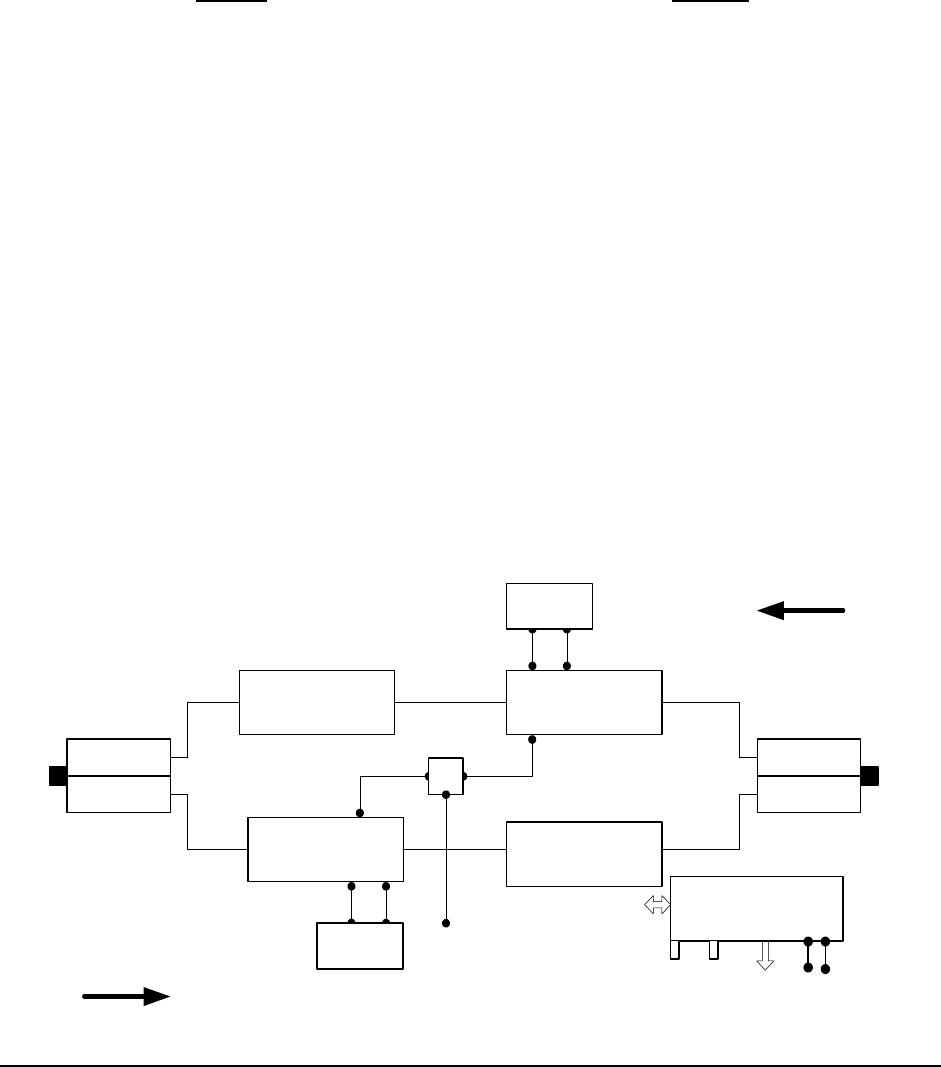
Product Overview
Field Tune-up, Alignment or Calibration
Before applying power set the rotary switch (located on the face plate) to the desired band of
operation. There is no field tune-up or calibration necessary. These units are aligned and calibrated
at the time of manufacture and are designed to retain calibration throughout the life of the product.
FCC ID and Canada Certification Numbers
The listed models have been tested and granted certification by the FCC in accordance with CFR
Title 47, Part 24 and by the DOC in accordance with RSS 131.
FCC ID Canada
IWD48810 TBD
Theory of Operation
The 48810A and 48810B repeaters are designed to enhance radio communication in buildings,
basements, tunnels and other RF shielded environments. The 48810A has a 15 MHz band customer
selectable to A,B, or C block, the 48810B has a 5 MHz band selectable to D, E, or F block.
These units work by receiving and amplifying the base TX signals via a donor antenna directed at the
desired base site. This RF path is called the downlink. The amplified base TX signal is re-radiated via
antenna(s) or radiating cable into the Service Area. Subscriber mobile RF signals are received by the
same service area radiating elements and amplified in the uplink RF path to be radiated back to the
base via the donor antenna.
B
Bo
ot
th
h
l
li
in
nk
ks
s
h
ha
av
ve
e
A
AG
GC
C
(
(a
au
ut
to
om
ma
at
ti
ic
c
g
ga
ai
in
n
c
co
on
nt
tr
ro
ol
l)
)
t
to
o
p
pr
re
ev
ve
en
nt
t
o
ov
ve
er
rd
dr
ri
iv
ve
e.
.
M
Ma
an
nu
ua
al
l
g
ga
ai
in
n
a
ad
dj
ju
us
st
tm
me
en
nt
t
i
is
s
a
al
ls
so
o
p
pr
ro
ov
vi
id
de
ed
d.
.
T
Th
he
e
c
co
om
mp
po
os
si
it
te
e
o
ou
ut
tp
pu
ut
t
p
po
ow
we
er
r
i
is
s
s
se
et
t
a
at
t
t
th
he
e
f
fa
ac
ct
to
or
ry
y
a
an
nd
d
l
li
im
mi
it
te
ed
d
b
by
y
t
th
he
e
A
AG
GC
C
c
ci
ir
rc
cu
ui
it
tr
ry
y
s
so
o
t
th
ha
at
t
i
in
nt
te
er
rm
mo
od
du
ul
la
at
ti
io
on
n
s
si
ig
gn
na
al
ls
s
w
wi
il
ll
l
n
no
ot
t
e
ex
xc
ce
ee
ed
d
-
-1
13
3
d
dB
Bm
m
a
as
s
s
sp
pe
ec
ci
if
fi
ie
ed
d
b
by
y
t
th
he
e
F
FC
CC
C.
.
The control board distributes DC power to the amplifier modules and monitors each module for any
fault conditions. LED indicators provide visual diagnostics while the 15 pin Dsub connector has DC
and TTL test points for more in-depth trouble shooting.
Block Diagram
Duplexers
ServiceBase
Power Amplifier
LNA Converter Power Amplifier
LNA Converter
Rx or
Uplink
Tx or
Downlink
Control Board
Test
Manual Gain
HF Filter
HF Filter
Power
and Fault
LEDs
Band
Select
3
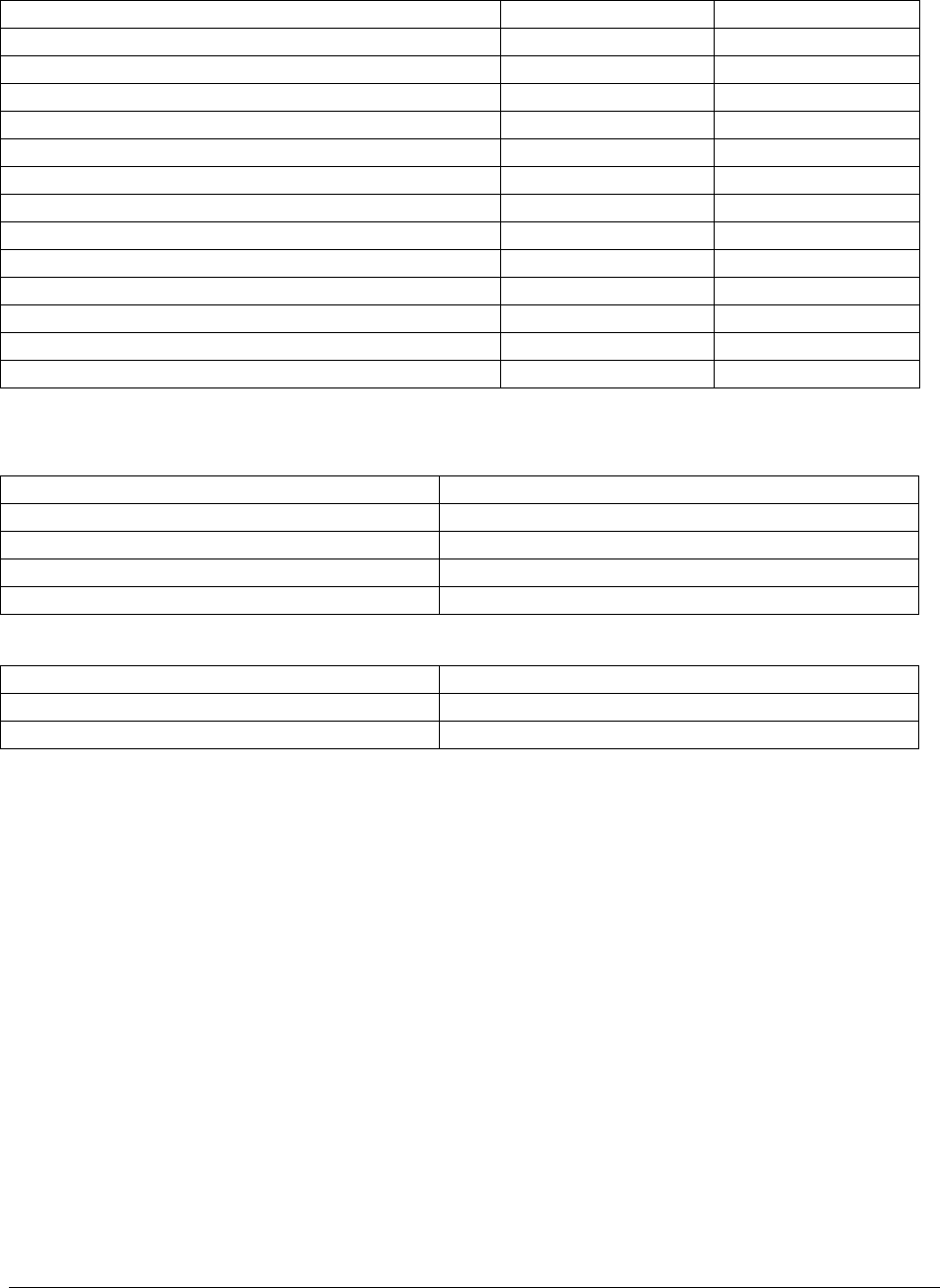
Electrical Specifications
Downlink Uplink
48810A, Block, selectable A, B, C A, B, C
48881B, Block, selectable D, E, F D, E, F
Gain, no attenuation 87 dB 87 dB
Gain Flatness, typical ±1.0 dB ±1.0 dB
Manual Attenuator Range 20 dB 20 dB
Output Limiter Range, Automatic* 20 dB 20 dB
Noise Figure, typical** 4.0 dB 4.0 dB
Composite Power, typical* +15 dBm +15 dBm
TDMA, CDMA, GSM
Impedance 50 Ohms 50 Ohms
VSWR, input 1.5 1.5
Propagation Delay, worst case at band edge <3.0 microseconds <3.0 microseconds
Power, 120/220 Auto Ranging, IEC-320 Socket 120 VAC@1.4A 120 VAC@1.4A
*AGC circuitry monitors the output power and reduces the gain to prevent overdrive and oscillation.
**No attenuation and at room temperature.
Mechanical Specifications
Connectors, RF N Female
Weight 33 lbs (14.9 kg)
Size, L x W x D 13 x 18.76 x 7.5 Inches (33.02 x 47.7 x 19.1 cm)
Mounting Centers 10.75 x 17.56 Inches (27.3 x 44.6 cm)
Diagnostics 15 Pin Dsub Connector
Environmental Specifications
Operating Temperature, ambient -30 to +50 °C
Maximum humidity 95% RH (non condensing)
Environmental Rating Similar to NEMA 3R
Intermodulation, Power, and AGC
Per CFR Title 47, Part 24, there shall be no spurious emissions greater than {43+ 10 Log 10 (Power
Out Watts)} dB below the carrier Power Out (dB) level. This is always equivalent to -13 dBm.
The primary contributor to spurious emissions is multiple signal intermodulation. As multiple signals
are amplified, they generate intermodulation products (IM). The level of IM is a factor of the amplifiers
linearity or 3rd Order Intercept Point (IP3), and the number and power of signals being amplified
(Pout).
IM = 3xPout - 2xIP3
‘Pout’ is the combined power of all the signals in the passband known as the composite power. Radio
Frequency Systems, Inc. has designed the 48810 repeaters using a combination of low distortion
amplifiers and automatic gain control (AGC) to achieve maximum output while automatically limiting
spurious intermodulation levels to -13 dBm or less for any number/power combination of signals.
A detector on the output of the power amplifier provides a DC voltage proportional to the output
power. This voltage is compared to a factory setting. As long as this voltage is less than the setting,
no action is required. However, when the combination of signal level and or number of signals
4
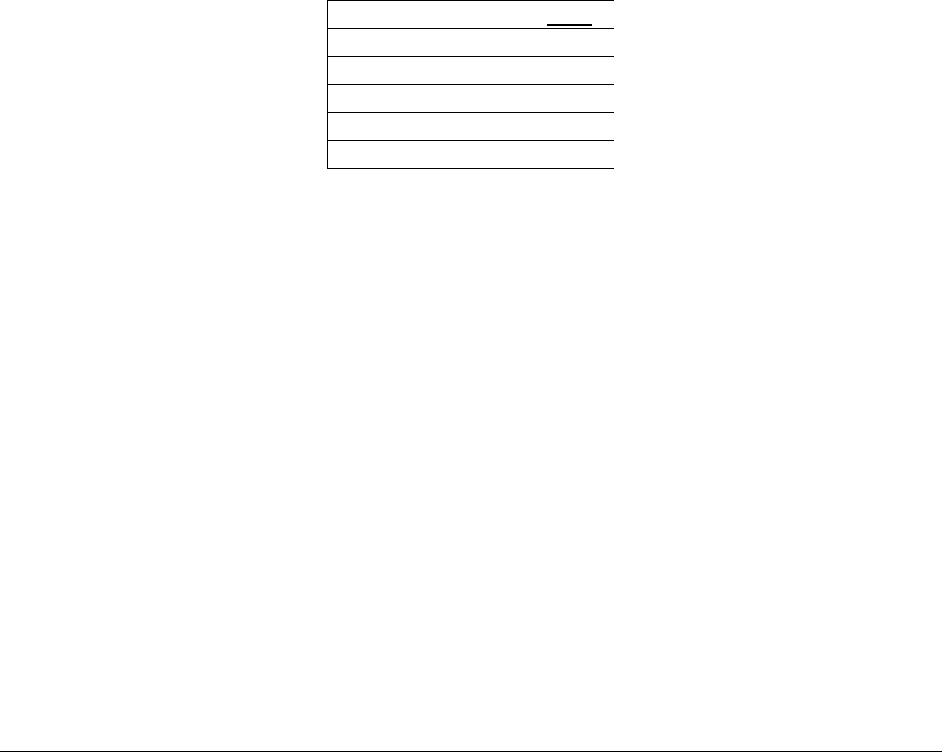
causes the composite power to exceed the safe level, the AGC's comparator generates a DC voltage
to a pin diode attenuator that increases attenuation in proportion to the level of the DC voltage.
The attenuation reduces the output power until the detector voltage is at a safe level again. If the
number or power of the signals is reduced, the DC offset voltage will reduce the level of attenuation.
In typical operation, the AGC is only active when needed to prevent overdrive. If the AGC is
constantly activating, RFS suggests that you reduce the gain via the manual attenuator and verify
that an oscillation between the base and service antenna systems does not exist.
AGC in the uplink is rarely needed in modern radio installations. As a portable comes closer to the
internal antenna network, its signal becomes stronger at the base site. Typically, the dynamic power
control at the base will turn the portable's power down to reduce interference and conserve power.
Overdrive is more likely to occur on the downlink path. All active signals at the donor base site will be
amplified by the repeater regardless of whether or not they are in use in the service area. Ideally, the
donor antenna is directional. This limits the number of donor base sites the repeater recognizes and
reduces the potential for interference. RFS recommends that you observe the signal levels before
connecting the repeater. While the extensive filtering in the 48810 will reject out-of-band signals by 80
dB, exceptionally strong out-of-band signals can cause overdrive. The most likely cause of an
overdrive condition is oscillation from inadequate antenna isolation.
Table 1 lists the typical output power per signal, which can be expected from the 48810 for a given
number of active signals operating at equal input levels. For a donor site that has 3 signals, the full
power per signal would be +10 dBm, assuming the incoming signal is sufficient so that that level will
be achieved.
Number of signals dBm
1 15.0
2 12.0
3 10.0
6 7.0
12 4.0
TABLE 1: TYPICAL OUTPUT POWER PER SIGNAL
In all cases, the actual signal output power is equal to the input signal power plus the gain of the
repeater. If a signal level of -80 dBm exists at the input to the repeater and the gain is 87 dB, the
resulting output will be +7 dBm, not +10 as noted in the previous paragraph. +14 dBm in this case is
the maximum output allowed under any condition. So, if the incoming signal is -70 and the gain is set
for 87 dB, the output would not be +17 dBm with 3 simultaneous signals, the AGC would reduce the
gain to 80 dB and the output to +10 dBm per signal.
AGC Automatic Shutdown
When the automatic gain control circuit reaches its limit (20 dB), the power amplifier stage is shut
down to prevent harmful distortion and potential damage to the repeater. Shutdown will occur if the
AGC control limit is exceeded for about 1/2 second. Power is then cut for two seconds. After this
timeout, power is brought back on-line. If the overload condition is still present, shutdown will again
occur in approximately one second. This cycle will be repeated until the condition causing AGC to
reach its limit is removed. Conditions that can cause AGC to reach its limit include the presence of
one or more very strong channels, a strong in-band noise source, or amplifier oscillation due to
inadequate antenna isolation.
Manual Gain Adjustment
The independent manual attenuators, RX for uplink and TX for downlink, are accessible from the
bottom of the unit. These are pre-set in the fully counterclockwise position, at minimum attenuation,
5

maximum gain. Manual attenuation is separate from the AGC so these attenuators can be used to
reduce overdrive while maintaining AGC range. At the full clockwise position, 20 dB of attenuation will
be introduced in the respective gain path.
AC/DC Power
AC power is supplied through a standard 3-wire male plug connected through a standard IEC-320
plug. Connect this plug to any standard 3-wire 120 VAC outlet. A 5x20 mm, .315 amp fast-blow fuse
is used to disconnect power in the event of a severe AC fault. A 5 amp mini ATO fuse is used
between the 5.5 VDC from the power supply and the control board, which distributes the power to all
components. This fuse is located on the control board.
DANGER
Always remove power before checking or changing fuses. 120VAC can be lethal.
⌦ Always unplug the amplifier before servicing the interior.
⌦ Never insert conductive objects into any opening.
⌦ Never remove or probe under the plastic safety shield covering the AC terminals of the power
supply.
⌦ Always use a standard 3-wire electrical outlet, with safety ground, for connection to AC
power.
Grounding and Surge Protection
The unit is case grounded through the three-prong plug. The donor antenna feeder cable should
have a cable ground attached to it, along with an inline surge arrestor between the donor antenna
and the 48810 “Base” port. The distribution network need not be grounded in building installations.
However, the distribution network in tunnels, subways or outdoor installations should also include a
cable ground and inline surge arrestor at or near the “Service” port.
Antenna Isolation
Isolation between the donor (base) antenna and service area antenna should be 20 dB greater
than the gain of the repeater amplifier.
If the isolation is less than the amplifier gain, then positive feedback sufficient for oscillation is present
in the system. Such oscillations will overdrive one or both amplifier chains and continuously activate
the AGC auto-shutdown circuitry. This situation will be apparent by the red fault LED being lit.
Antenna isolation is usually not a problem for in-building installations. Isolation is improved by using a
directive donor antenna and facing it away from the distribution or service antenna(s). Decoupling is
achieved by spatially separating the antennas vertically and/or horizontally. Other factors influencing
isolation include multi-path reflections, structures, other antennas, passing vehicles, personnel
proximity, etc. Contact RFS Applications Engineering for further assistance.
It is always best to measure the isolation before connecting the repeater. The most direct way to
measure the isolation is to inject a known signal into one antenna, and measure the coupled signal at
the other antenna. This should be done across the applicable bandwidth to account for the frequency
dependency of standing waves.
6
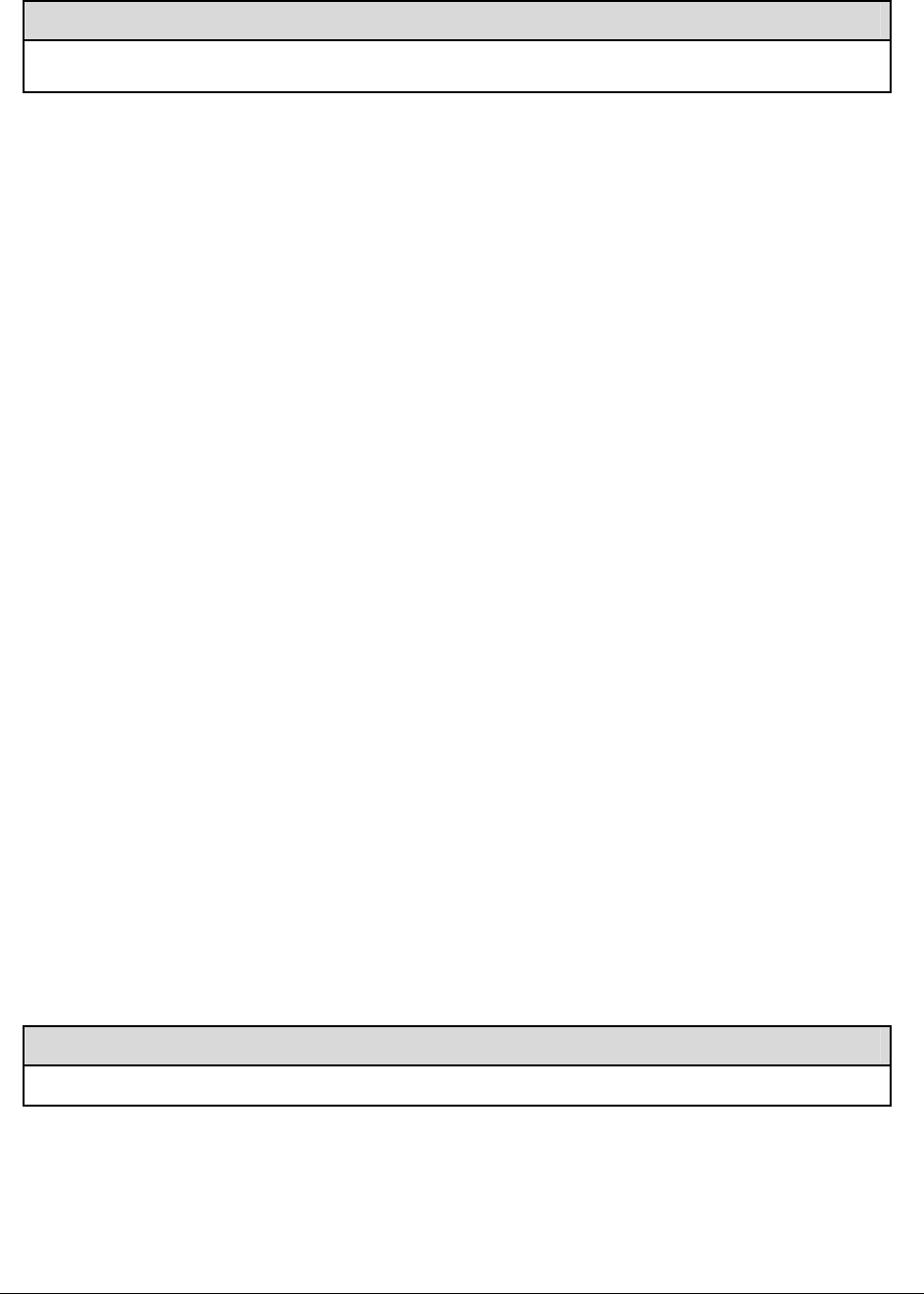
Installation
Choose an optimal location.
The choice of a location for the 48810 to reside is often dictated by circumstance. These units
can withstand a wide range of environmental conditions, but a cooler environment will increase
the life of the product. The 48810 is not intended for outdoor operation without protection. A
central location is desired to provide symmetry in the distribution network. Furthermore, a
stacking room near a riser for easy access to the roof and other floors is desired. However,
access to clean 110/220 VAC power is the only requirement.
Install directional donor antenna and align with desired base site.
Yagis, corner reflectors and panel antennas work best. The 48810 has sufficient filtering to
prevent undesired signals from causing interference; however, it is best to reduce the chance for
interference by directing the mobile signals only towards the desired base site.
Check the incoming signal.
The product will work with a wide range of RF input signal levels. Ideal levels on the downlink are
in the range of -75 dBm. These levels will provide a maximum output power while not causing
significant overdrive. Also, check for extremely strong out-of-band signals. These may overdrive
the filtering and cause gain reduction.
Connect the donor antenna to the 48810 via a 50-ohm coaxial cable.
Size and type of cable are a matter of choice. Typically, 1/2" Flexwell foam coax is used, plenum
rated for inside buildings and work areas. However, 7/8" cable may be used to reduce
longitudinal loss. Superflex cables are easier to install but have higher longitudinal loss.
Install service area antenna(s).
Determining the location and type of service area antennas is part of the distribution system
design. Generally, it is desired to minimize the amount of coax that has to be installed. However,
in buildings with extensive obstructions, it may be necessary to install several service area
antennas. For assistance with antenna placement, contact RFS Applications Engineering.
WARNING
Do not connect AC power until antennas have been connected to both the base and
service area ports.
IMPORTANT
Observe MPE cautions when determining the type and location of all antennas.
7
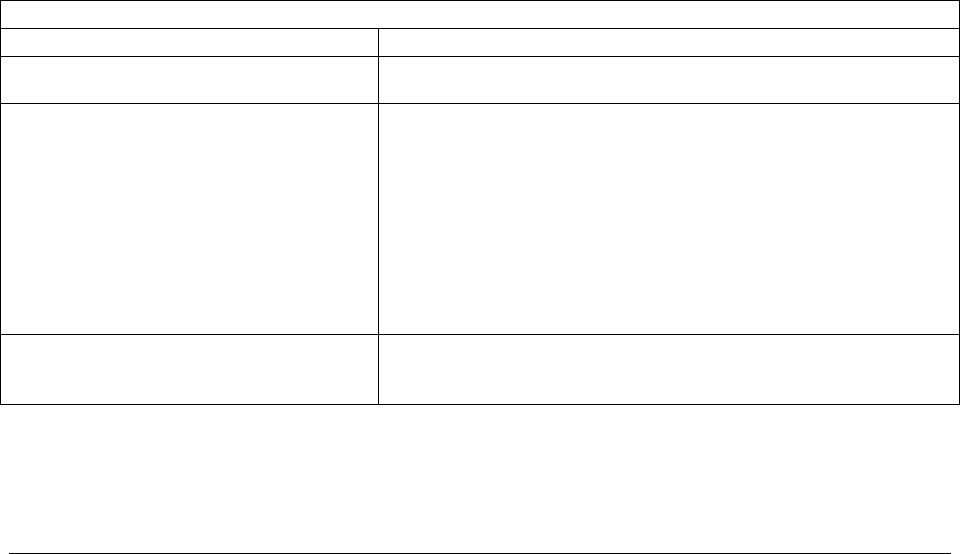
Mount repeater upright, with the connections toward the floor.
Ensure there is sufficient space above and below the unit to allow airflow through the heat sink.
Check to make sure the AC power cord can reach the power source. Also, provide adequate
bending radii for the coaxial cables.
Connect service antenna(s) to "Service Area" port via a 50-ohm coaxial cable.
Multiple service area antennas/radiating cable runs may be connected to the 48810. Splitters and
taps may be used to accommodate unique distribution systems.
Connect the donor antenna cable to "Base".
Connect the PM800-10 to the test port.
The PM800-10 performance monitor is provided with each unit. This monitor connects to the 15-
pin diagnostics Dsub connector on the bottom of the unit either directly or via the 10-foot
extension cable. The PM800-10 provides LED readouts of the pins as explained in the
diagnostics/troubleshooting section.
Select the desired band via the rotary switch on the faceplate.
Connect AC power to the unit and observe. See troubleshooting section.
Test the installation.
This test should include multiple subscribers in various locations of the service area. It should
also include one subscriber in fairly close proximity to the service antenna. This test will check to
ensure that a nearby user does not overdrive the uplink and reduce coverage for the other users.
See the troubleshooting guide if there is an overdrive condition in either the uplink or downlink.
Diagnostics/Troubleshooting
LED’s located in 487XX faceplate
Problem: Solution:
Green power LED not lit. Check power source and the AC fuse located in the EIC plug.
Check for DC voltage (see below).
Green power LED lit and no red Fault
LED, unit does not appear to be
working.
Check for a break in the donor or distribution networks. First,
check both RF output via the DC voltages on Pins 12 and 13
or UL DET.V and DL DET.V from the PM800-10. Also, check
to ensure the donor signal is still available to the repeater. An
obstruction could be blocking the donor base site or the donor
antenna could have become misaligned. Then, check the
integrity of the distribution network. Coaxial cable has a
minimum bending radius, if that is exceeded the inner
conductor may crack or break causing excessive reflections to
the signals.
Red LED is lit.
The red LED indicates a summary fault from any of the fault
conditions identified in the Test Points section. Specific action
is described in that section.
8

Yellow AGC LED is lit.
AGC LEDs indicate an overdrive condition in the respective
link. Reduce the respective link gain via the Gain Adjust until
the LED goes out. Generally, the opposing link gain should be
adjusted to approximately the same setting. If the LED does
not go out, then the input signal is too strong and should be
attenuated with a 10 dB in-line attenuation pad on the Base or
Service port.
Flashing Red Fault LED
This occurs when there is an extreme overdrive condition and
the AGC range has been exceeded. Reduce gain via the Gain
Adjust and check for strong drive signals on the link. Also see
the section on Antenna Isolation.
Checking DC Voltage
DC Voltage can be checked via the 15-pin test port. Pins 10
and 11 are the DC voltage associated with the AGC circuitry.
There should be at least 1.7 volts to ground-pin 14.
Alternatively, you can plug in the PM800-10 monitor into the
test port and measure the UL AGCV to ground.
Test Point Descriptions
The PM800-10 performance monitor is included and is designed to provide convenient visual
readout. A DC VOM can be used to quickly assess the health of the unit. The repeater provides the
output voltages and the power to operate the PM800-10. The –10 denotes that a 10 foot extension
cable is included with the PM800. A 30-foot extension cable (part #: 103300014900) is also available
for remote mounting or the PM800 can be directly plugged into the 15-pin test port located on the
front plate of the repeater. Should the performance monitor become damaged, contact RFS
customer service at 1-800-321-4700 to order a replacement.
In the following description, the term “pin number” refers to the connector pins in 15 pin Dsub Test
Port on the 48810. Pin numbering starts upper right and proceeds from right to left, top to bottom
when viewed externally. The functions are explained below with details on how the unit is used in
practical applications.
Pins 1-8: Max sink/source = 15mA, output only. Accidental input max = 6.0 VDC
1. UL LNA Alarm, logic, low=fault
2. DL LNA Alarm, logic, low=fault
3. UL Converter Alarm, logic, low=fault
4. DL Converter Alarm, logic, low=fault
5. UL PA Alarm, logic, low=fault
6. DL PA Alarm, logic, low=fault
7. Temperature Alarm > +85 C, logic, low=fault
8. AGC Alarm, logic, low=fault
Pins 1-6 each refer to a specific module inside the repeater. A low TTL voltage will light the
associated LED, indicating a fault condition with that component. See the Component Location
section to find the associated component’s part number. The faulty component may be removed and
sent in for repair, or a replacement may be ordered.
Pin 7 is a temperature alarm indication that the internal temperature has risen above +85°C. The
48810 series use convection cooling, not fans. It is rated for +55°C ambient. In the event of the
temperature alarm, check to make sure the unit is mounted upright and vertical. There must be
sufficient room below and above the unit to allow airflow to the heat sink.
9

Pin 8 indicates that the unit is in automatic shutdown mode due to an overdrive that is
exceeding the AGC’s range. The AGC is non-latching and will clear itself when the overdrive is
removed. The alarm light will remain lit even though the shut down feature is powering on and
off to check for the overdrive condition.
Conditions that can cause AGC to reach its limit include the presence of one or more very strong
channels, a strong in-band noise source, or amplifier oscillation due to inadequate antenna isolation.
Disconnect the power and the Base and Service cables. Use a spectrum analyzer to look for strong
input signals coming from the base donor antenna or the service area distribution network. If there
are no strong input signals, check the antenna isolation as described in this manual. Reducing the
gain may also help to clear the condition. See AGC section for more information.
Strong uplink signals may be intermittent. These may be present when a mobile in the coverage area
is close in to the service area antenna. In this case, the service area antenna must be moved to
prevent overdrive under normal operating circumstances.
Pin 9: Max sink = 8 mA. Max input = 6.0 VDC
Pin 9 is a remote disable feature. Connecting pin 15 to pin 9 via a relay will cause the repeater to
shut down. This can be accomplished with a remote control unit like the RFS RPM700 (remote
performance monitor).
9. Disable (input), logic, high=disable
Pins 10-13: Max sink = 8mA. Max source = 15mA.
10. UL AGC Voltage, analog, no AGC approximately 5.3 VDC, Full AGC approximately 1.7
VDC
11. DL AGC Voltage, analog, no AGC approximately 26.5 VDC, Full AGC approximately
7.65 VDC
12. UL Det. Voltage, analog, approximately 0 to 3VDC @ approximately 0.3VDC per dB
13. DL Det. Voltage, analog, approximately 0 to 3VDC @ approximately 0.3VDC per dB
Pins10 and 11 are the indicators for Automatic Gain Control. The circuitry is housed in the PA
amplifier stage. It monitors the output power and controls a pin attenuator to reduce gain and
thus, the output power if needed to prevent overdrive. The DC voltages on pins 10 and 11
represent the amount of attenuation:
No AGC approx. 5.3VDC, full AGC approx. 1.7VDC. The yellow LEDs on the PM800 will light up
when the AGC is active (adding attenuation).
AGC may be intermittent due to temporary overdrive conditions. If the LED is constantly lit then
reducing the manual gain via adjustment on the faceplate should cause the LED to go out. The
manual attenuator is separate from the AGC attenuator. Reducing the gain via the manual
attenuator will optimize the installation and preserve the full AGC attenuation for overdrive
conditions.
Pins 12 and 13 are detector output voltages for the associated path. The DC voltage represents
the output power. These voltages can be used to roughly estimate the amount of output power.
For example, the donor antenna can be rotated to look for maximum output power if a spectrum
analyzer is not available.
Pin 14: Max sink = 1A.
14. Ground for Pins 10-13.
10

Pin 15: Max source = 80mA.
Pin 15: +5VDC, thermally fused (self resetting), 50mA max.
Pin 15 can be used as the drive voltage to disable the unit using Pin 9. It is also used to power
the PM800-10 performance monitor, when attached.
Component Location
48810
Field repair for the 48810 is recommended only for the following parts:
48810A 48810B
Downlink Uplink Downlink Uplink
LNA Converter
Power Amplifier 101300064002 101300064001 101300064002 101300064001
Control Board
Power Supply
11

Maintenance, Repair and Warranty
Periodic Maintenance
There is no periodic maintenance required for the 48710 or 48722. As long as the repeaters are kept
away from extreme temperatures and moisture, they should provide long-term, carefree operation.
However, as a system, periodically check all RF connections for corrosion, strain damage, and
proper tightness. Also, periodically check the AC power connections for integrity.
Ordering and Returning Components
For technical assistance, call Radio Frequency Systems Applications Engineering at 1-800-659-
1880.
For returns, repairs, and ordering, contact Radio Frequency Systems Customer Service at 1-800-
321-4700 for a Return Authorization Number. Be prepared to provide the model number, serial
number of the unit, as well as a description of the symptoms of the problem. Send components or
units freight pre-paid with the Return Authorization Number on the outside of the package to:
Radio Frequency Systems
4100 SW Research Way
Corvallis, OR 97333
Limited Warrant
The Seller warrants that, at the time of shipment, the products manufactured by the Seller are free
from defects in material and workmanship. The Seller's obligation under this warranty is limited to
replacement or repair of such products within two years from the date of shipment. No material is
accepted for replacement or repair without written authority of the Seller. Replacement or repair is
made only after an examination at the Seller's facility shows defective material or workmanship at the
time of manufacture. All shipping charges on the returned material must be prepaid by the Buyer.
The seller is in no event liable for consequential damages, installation costs or other costs of any
nature as a result of the use of the products manufactured by the Seller, whether used in accordance
with instructions or not. The Seller is not liable for replacement of any product damaged by lightning.
This warranty is in lieu of all others, either expressed or implied. No representative is
authorized to assume for the Seller any other liability in connection with the Seller's products
12
